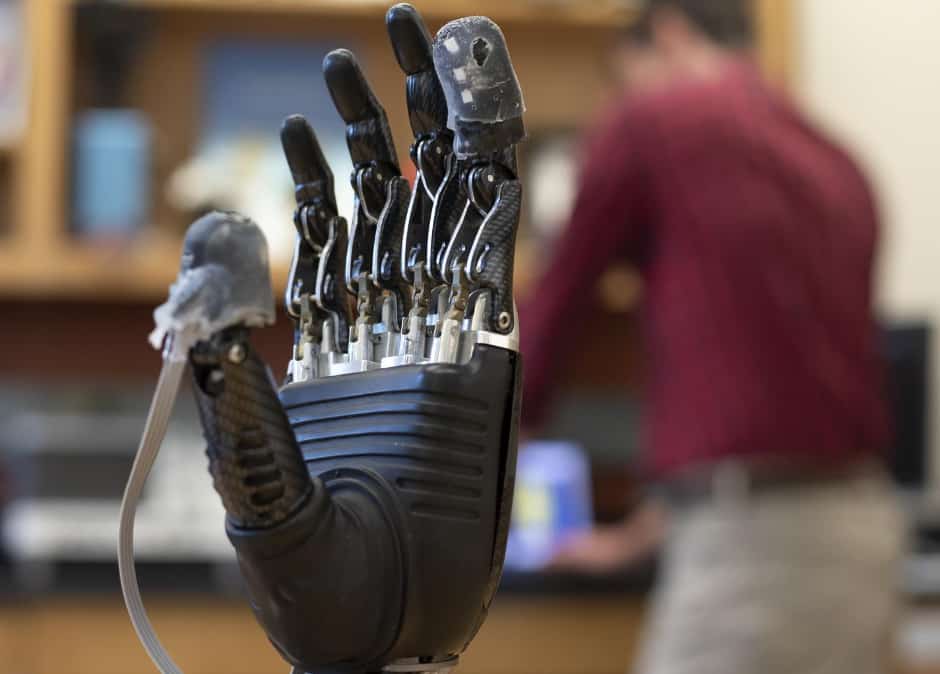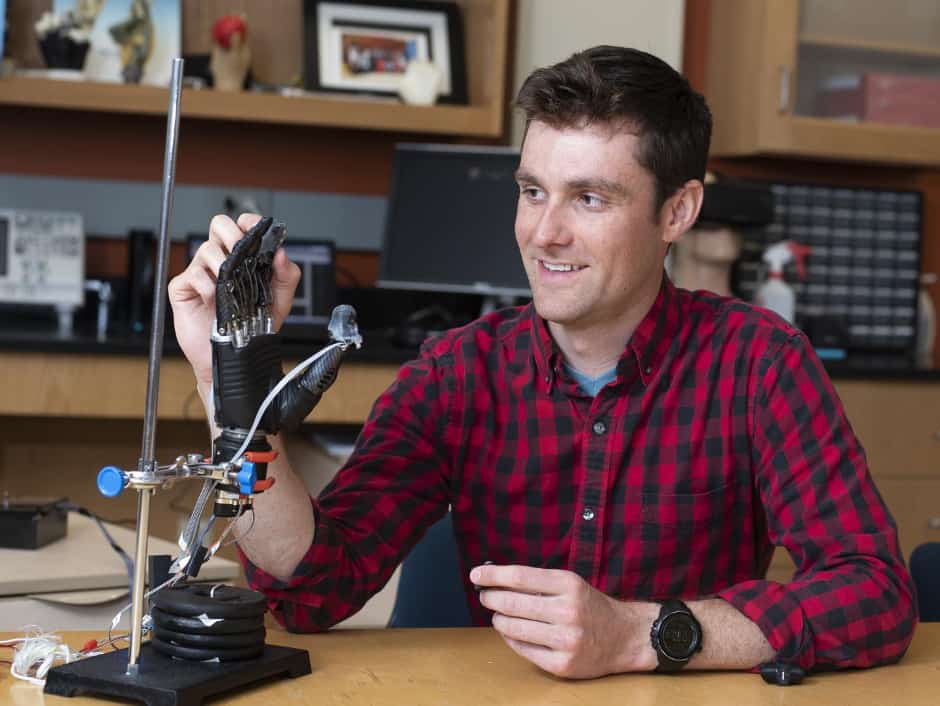
Made of fabric and rubber laced with sensors to mimic nerve endings, e-dermis is claimed to recreate a sense of touch – and pain - by sensing stimuli and relaying the impulses back to the peripheral nerves. The work has been published in Science Robotics.
"This is interesting and new, because now we can have a prosthetic hand that is already on the market and fit it with an e-dermis that can tell the wearer whether he or she is picking up something that is round or whether it has sharp points,” said Luke Osborn, a graduate student in biomedical engineering.
Human skin contains receptors that relay sensations to the brain, providing a biological template for the research team, which includes members from the Johns Hopkins departments of Biomedical Engineering, Electrical and Computer Engineering, and Neurology, and from the Singapore Institute of Neurotechnology.
Bringing a more human touch to modern prosthetic designs is critical, especially when it comes to incorporating the ability to feel pain, Osborn said.
Video credit: Science Robotics/AAAS
"Pain is, of course, unpleasant, but it's also an essential, protective sense of touch that is lacking in the prostheses that are currently available to amputees," he said. "Advances in prosthesis designs and control mechanisms can aid an amputee's ability to regain lost function, but they often lack meaningful, tactile feedback or perception."
E-dermis conveys information to the amputee by stimulating peripheral nerves in the arm, making so-called phantom limbs – where an amputee has the sensation that a missing body part is still there - come to life. According to JHU, e-dermis does this by electrically stimulating the amputee's nerves in a non-invasive way, through the skin, said the paper's senior author, Nitish Thakor, a professor of biomedical engineering and director of the Biomedical Instrumentation and Neuroengineering Laboratory at Johns Hopkins.
"For the first time, a prosthesis can provide a range of perceptions, from fine touch to noxious to an amputee, making it more like a human hand," said Thakor, co-founder of Infinite Biomedical Technologies, the Baltimore-based company that provided the prosthetic hardware used in the study.
In order to restore a full spectrum of tactile sensations, the team created a "neuromorphic model" that mimicked the touch and pain receptors of the human nervous system. This allowed the e-dermis to electronically encode sensations just as the receptors in the skin would. Tracking brain activity via electroencephalography, the team determined that the test subject was able to perceive these sensations in his phantom hand.

Osborn with a prosthetic hand equipped with the e-dermis (credit: Larry Canner/JHU)
The researchers then connected the e-dermis output to the volunteer by using transcutaneous electrical nerve stimulation. In a pain-detection task, the team determined that the test subject and the prosthesis were able to experience a natural, reflexive reaction to pain while touching a pointed object and non-pain when touching a round object.
The e-dermis was tested over the course of one year on an amputee who volunteered in the Neuroengineering Laboratory at Johns Hopkins.
"After many years, I felt my hand, as if a hollow shell got filled with life again," said the anonymous amputee who acted as the team's principal volunteer tester.
The researchers plan to further develop the technology and better understand how to provide meaningful sensory information to amputees in the hope of making the system ready for widespread use.




Nanogenerator consumes CO2 to generate electricity
Nice to see my my views being backed up by no less a figure than Sabine Hossenfelder https://youtu.be/QoJzs4fA4fo